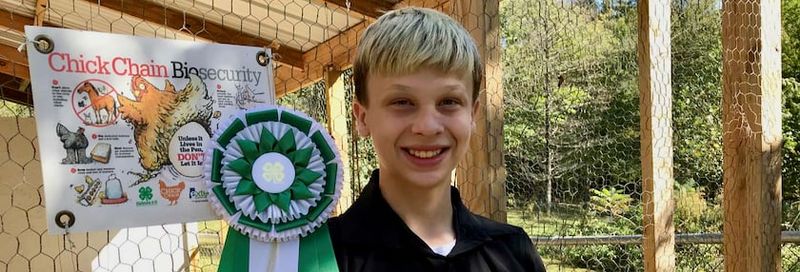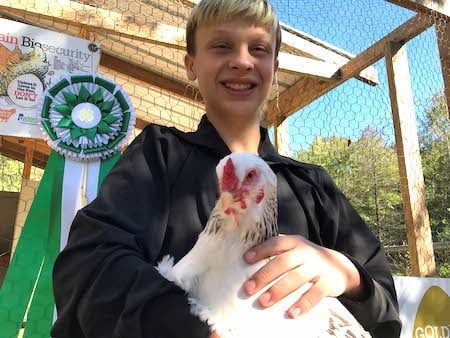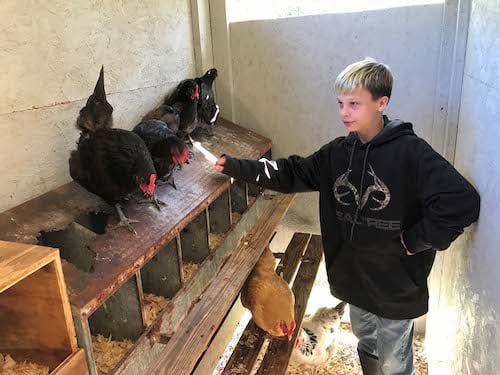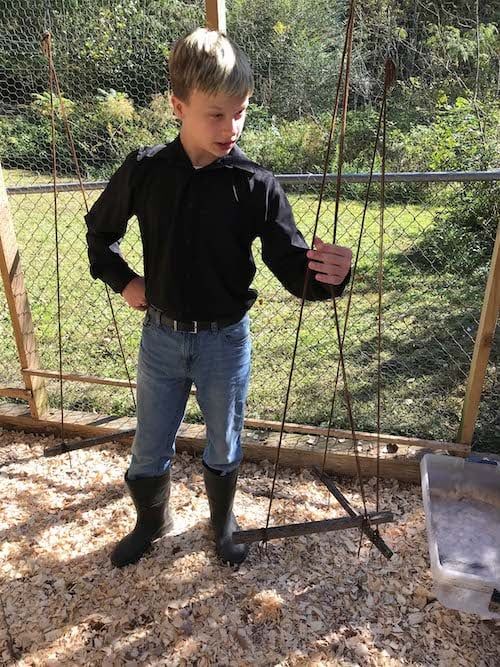Golden Egg = Good Egg


Alabama’s 4-H Golden Egg Contest
Every year, the Alabama 4-H Golden Egg Contest requires attention to detail, outstanding management skills, and a willingness to exhibit excellence.
4-H members demonstrate mastery of chicken management so the poultry is healthy and happy—unhappy or uncomfortable chickens do not lay eggs. The 4-H members also must manage their chickens so that they and their eggs are well cared for, selected properly, and transported safely to the competition.

This year, the 4-H members delivered their eggs to the 4-H agent in their county and the 4-H agents brought them to the annual meeting.
Auburn University’s Poultry Science Department faculty, particularly Dr. Dianna Bourassa and her graduate students, assisted Dr. Brigid McCrea in evaluating the eggs.
Evaluation process
First, all the eggs were taken out of their transport containers, be they Styrofoam coolers or refrigerated bags, and allowed to reach room temperature.
Cartons were then opened, and the exterior of the eggs were examined for color uniformity. Although some backyard flock owners prefer to see a variety of eggshell colors, the average American consumer is unused to variations in shell color and will often remove and discard a differently-colored egg.
Dr. Bourassa evaluated the eggs for uniformity in size and shape. 4-H flock owners with a larger flock will need to collect eggs over time to have enough eggs enter the competition. Small flock owners can do this over a day or two.
Dr. Bourassa then evaluated the eggs for uniformity in shell color, the most difficult portion of the contest. We all know that certain hens lay eggshells with a particular color. So, picking out eggs that match can be a task, especially for brown and blue-green shelled eggs, but not for white-shelled eggs.
Lastly, eggs were evaluated for cleanliness and stains. Eggs destined for the consumer should be clean and that means nest boxes need to be clean and have fresh shavings. Stains on white-shelled eggs are easy to buff out with sandpaper, but not for brown-shelled or blue-green-shelled eggs.
Three randomly-selected eggs from each dozen were cracked open and analyzed for Haugh Unit, Roche Color, and the presence or absence of meat or blood spots.
- The Haugh Unit examines the height of the albumen in relation to the weight of the egg.
- The Roche color assigns a higher number to eggs with darker yolks.
- The presence of meat spots or blood spots are a negative and can be caught by candling the eggs before turning them in.
Lastly, the shells are washed and allowed to dry overnight. Then, the thickness of the shell is measured with a pocket micrometer. Thicker-shelled eggs are more likely to make it to customers without breaking, a preferable trait.
Your Golden Egg winner!
This year’s winner was Phoenix Bates from Etowah County 4-H.

Phoenix had been a 4-H Chick Chain Project participant last year and his chickens were laying well. Because Phoenix won, that meant his 4-H agent, Michael Dillon, received a sign for the county extension office as well as a candler to help with training future Chick Chain Project participants.
The breeds in Phoenix’s 15-bird flock include Light Brahmas, Buff Orpingtons, and Black Australorps. Two are roosters: Foghorn Leghorn and Chicken Little.
Phoenix is on the 4-H Youth Council in his county and heard about 4-H and Chick Chain through friends and at school.
The win for Phoenix and his county almost didn’t happen. Alabama’s August heat meant his chickens started laying intermittently. Luckily, he got six eggs three days in a row to assemble his dozen to enter.
Phoenix will tell any 4-Hers to enter the contest. “You just don’t know what could happen!” said Phoenix.
Healthy, happy hens
One of the keys to his success is keeping the coop clean performing this chore a couple times a month, and the nest boxes a couple times a week. He says he was surprised at how much time it takes to care for the chickens.

Phoenix always tries to keep food in front of his hens. He uses a trough feeder with a scratching guard over the top that is affixed to the coop wall. He offers another hanging round feeder in the middle of the chicken’s coop and run.
Given the size of his flock, he has also planned well for the offering of fresh, clean water with two 1-gallon waterers hanging in the coop. Because he fills those frequently, he uses a metal carabiner to hang them.
One special feature of Phoenix’s coop is a unique hanging addition. Phoenix watched his chickens’ behavior and saw that they needed a little something extra meet their activity needs. He added swings!

His swings were hung with yarn and made out of poplar. Both he and his dad helped build and hang these swings and four different heights.
Phoenix’s coop is beautiful and in great shape. The nest boxes were in the back of the coop and were darkened with a coop divider to help the hens find seclusion. An open design allows for air flow. Also, the run was covered to maintain good biosecurity.
Breeding future flocks
So what is next for the Bates flock? Well, Phoenix is interested in breeding. He wants to expand the coop and get more chickens.
After starting a breeding program for the Light Brahmas, he wants to hatch and sell the chicks. Maybe in a few years, the chicks that you buy at your local feedstore will have been bred and hatched from the Bates’ family farm!
Tags:Plain Talk

Chicken Whisperer is part of the Catalyst Communications Network publication family.











